Abstract
With the application of plate count methods and of the KOH-flexirubin test, bacteria belonging to the Cytophaga group were proved to occur regularly in samples from biological sewage treatment facilities. Generally, the percentage of Cytophaga colonies of the total heterotrophic colonies was lowest in the inflow sewage water as compared with the values found in activated sludge, trickling filter, and effluent samples. During an observation period of 16 months, the highest percentages of cytophagas were found in winter samples from activated sludge and trickling filters. Furthermore, cytophagas were shown to have high percentages of the bacteria lytic to polymeric substrates such as cellulose, chitin, dextran, pectin, xylan, and gelatin. Thus, it is suggested that cytophagas may contribute to sewage purification, especially at cold temperatures and by polymer breakdown. Cytophaga strains isolated were shown to have gliding motility, flexirubin pigmentation, and a low guanine plus cytosine base ratio in common. The strains were roughly subdivided into a spreading, a nonspreading, and a cellulolytic group.
Full text
PDF

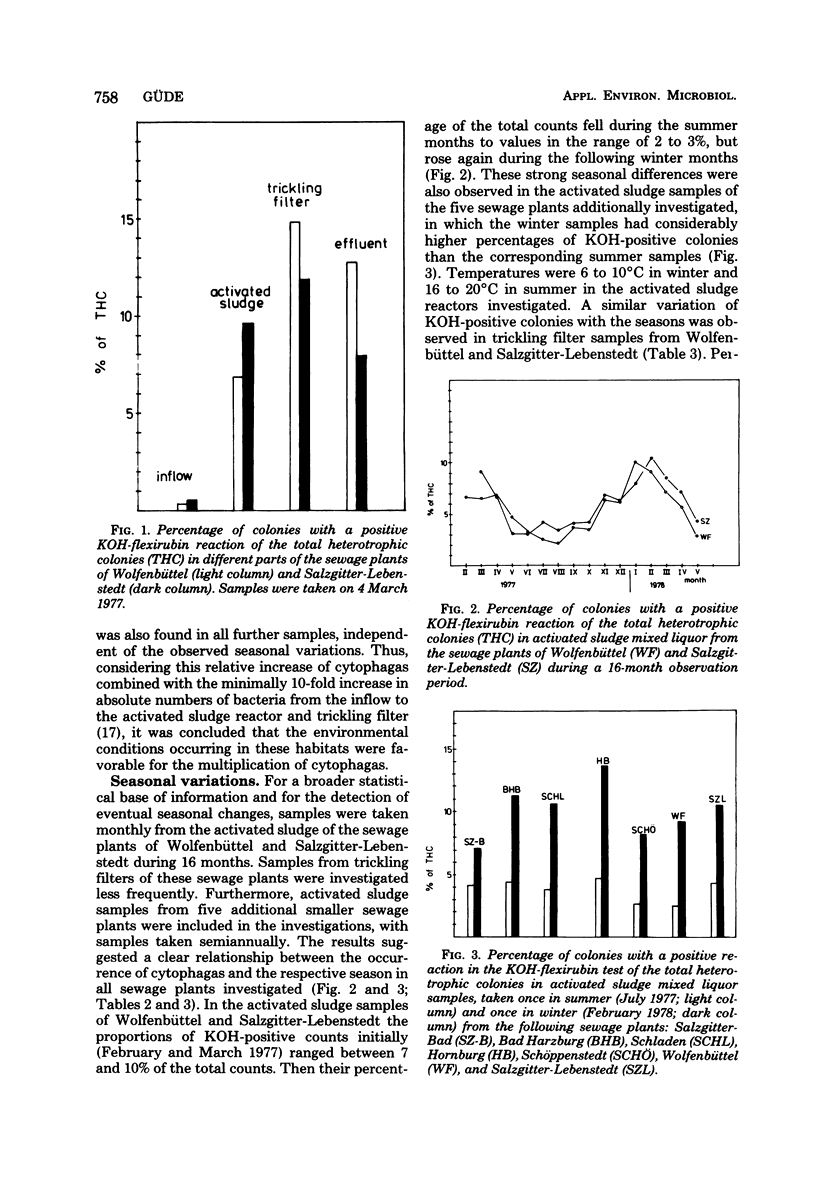
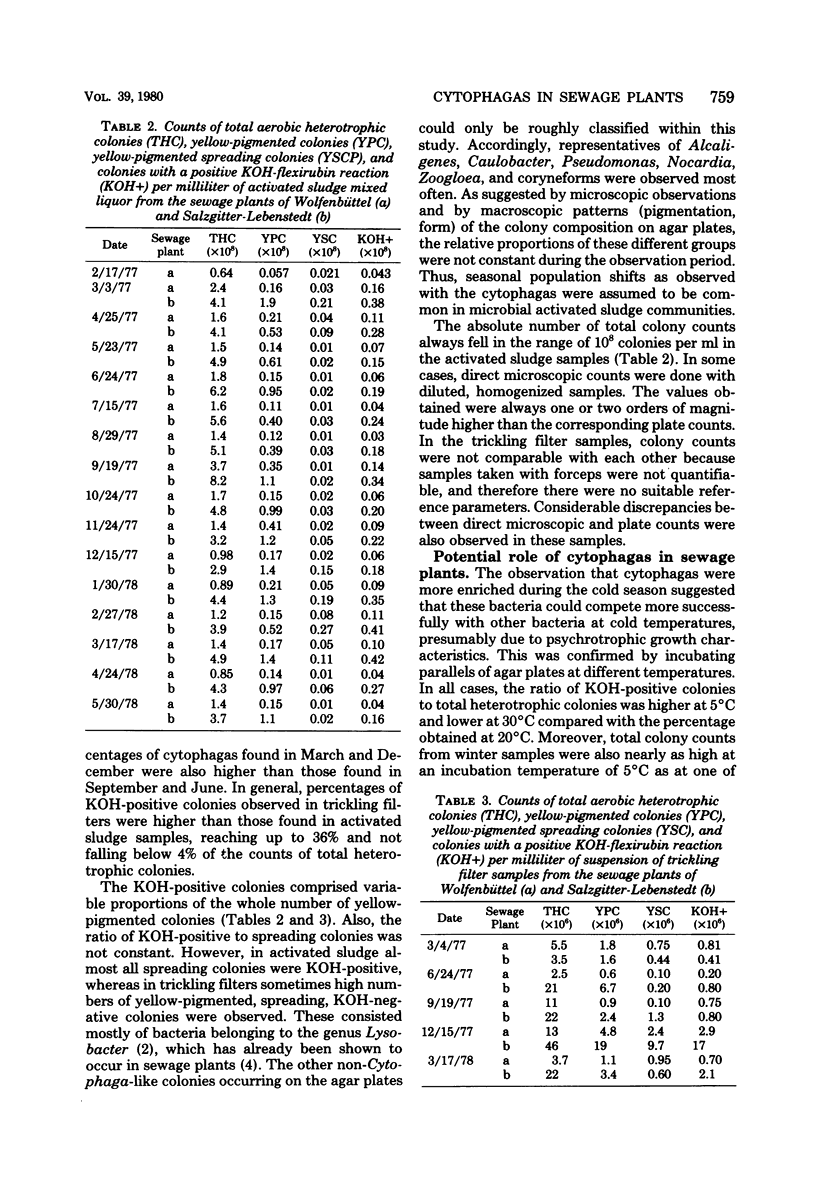
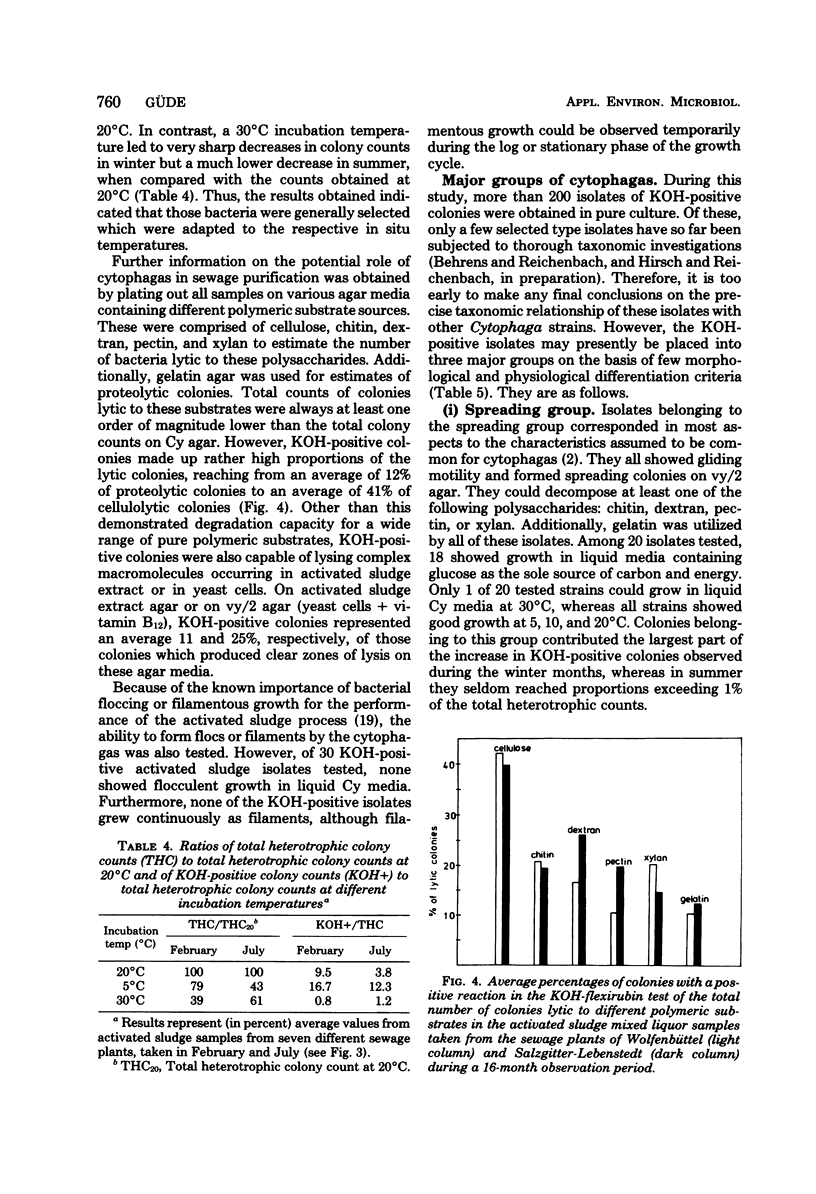

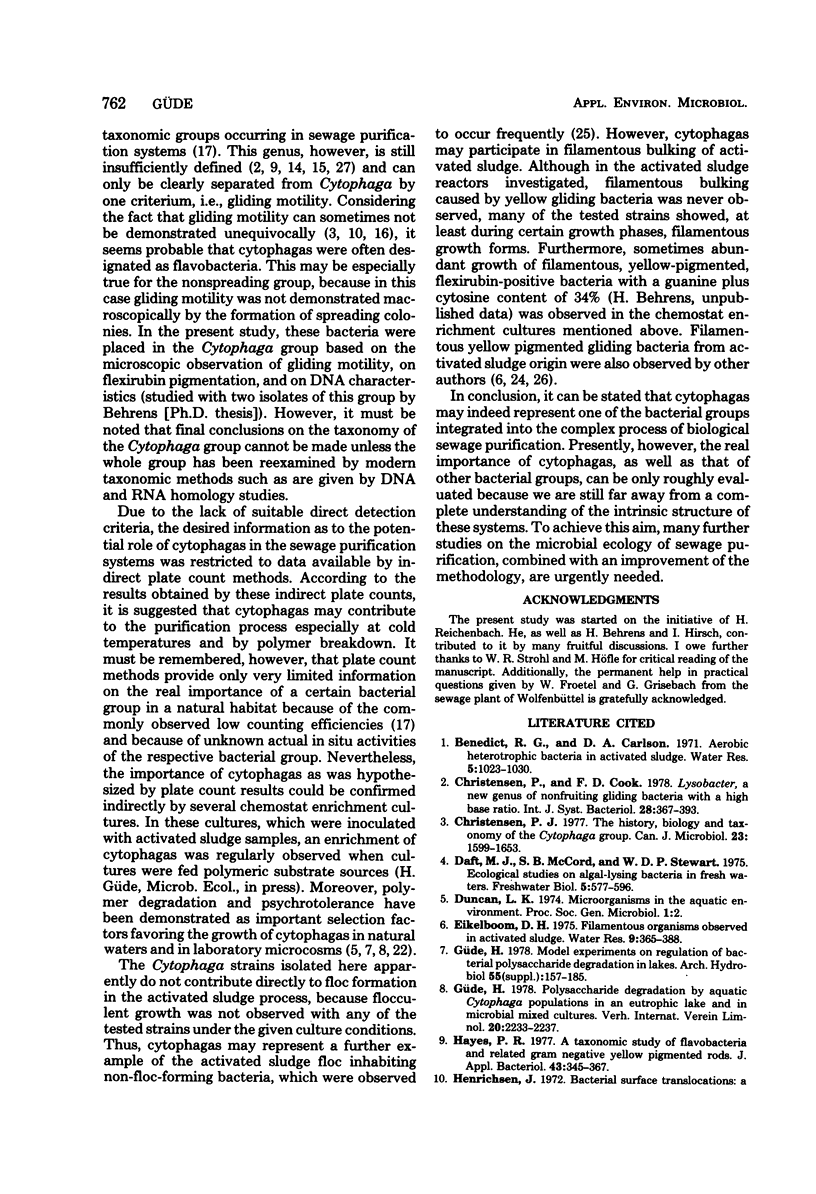
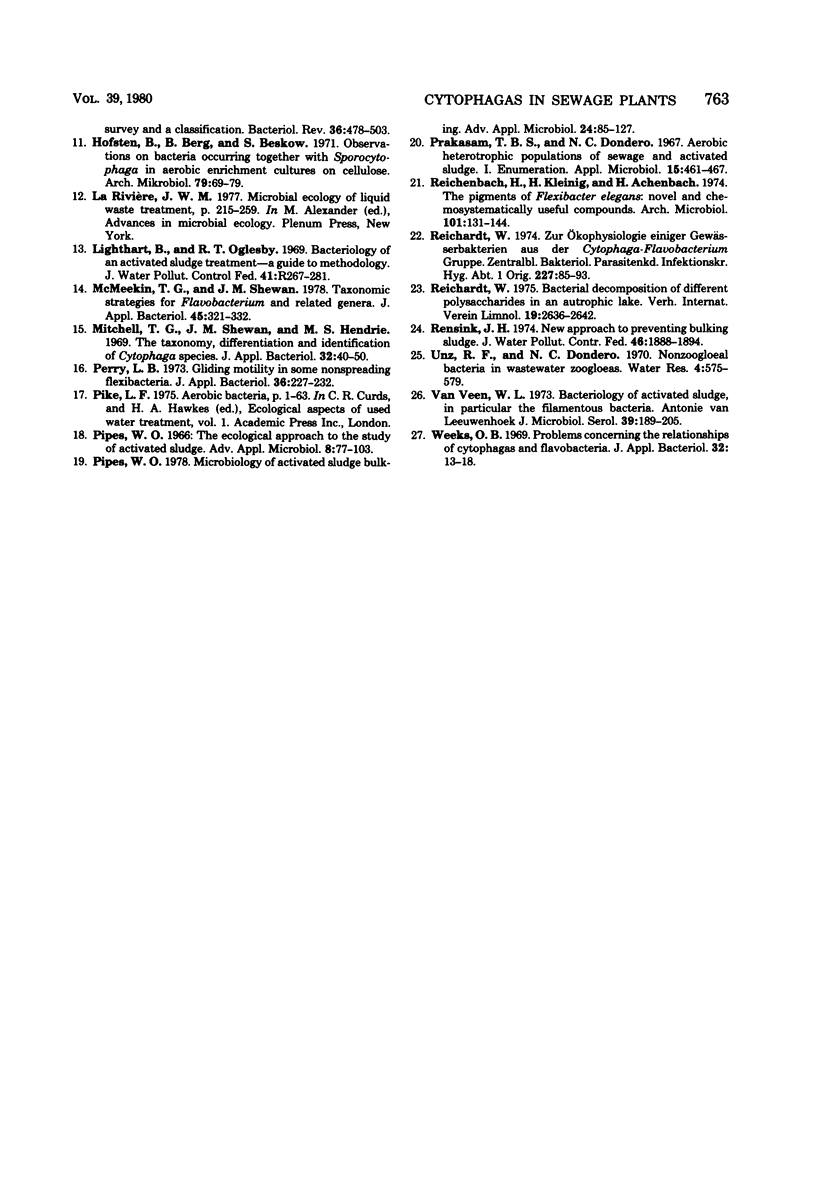
Selected References
These references are in PubMed. This may not be the complete list of references from this article.
- Achenbach H. The pigments of Flexibacter elegans: novel and chemosystematically useful compounds. Arch Microbiol. 1974;101(2):131–144. doi: 10.1007/BF00455933. [DOI] [PubMed] [Google Scholar]
- Christensen P. J. The history, biology, and taxonomy of the Cytophaga group. Can J Microbiol. 1977 Dec;23(12):1599–1653. doi: 10.1139/m77-236. [DOI] [PubMed] [Google Scholar]
- Henrichsen J. Bacterial surface translocation: a survey and a classification. Bacteriol Rev. 1972 Dec;36(4):478–503. doi: 10.1128/br.36.4.478-503.1972. [DOI] [PMC free article] [PubMed] [Google Scholar]
- McMeekin T. A., Shewan J. M. A review. Taxonomic strategies for Flavobacterium and related genera. J Appl Bacteriol. 1978 Dec;45(3):321–332. doi: 10.1111/j.1365-2672.1978.tb04232.x. [DOI] [PubMed] [Google Scholar]
- Mitchell T. G., Hendrie M. S., Shewan J. M. The taxonomy, differentiation and identification of Cytophaga species. J Appl Bacteriol. 1969 Mar;32(1):40–50. doi: 10.1111/j.1365-2672.1969.tb02187.x. [DOI] [PubMed] [Google Scholar]
- Perry L. B. Gliding motility in some non-spreading flexibacteria. J Appl Bacteriol. 1973 Jun;36(2):227–232. doi: 10.1111/j.1365-2672.1973.tb04095.x. [DOI] [PubMed] [Google Scholar]
- Prakasam T. B., Dondero N. C. Aerobic heterotrophic bacterial populations of sewage and activated sludge. I. Enumeration. Appl Microbiol. 1967 May;15(3):461–467. doi: 10.1128/am.15.3.461-467.1967. [DOI] [PMC free article] [PubMed] [Google Scholar]
- Reichardt W. Zur Okophysiologie einiger Gewaässerbakterien aus der Flavobacterium-Cytophaga-Gruppe. Zentralbl Bakteriol Orig A. 1974;227(1-4):85–93. [PubMed] [Google Scholar]
- Weeks O. B. Problems concerning the relationships of cytophagas and flavobacteria. J Appl Bacteriol. 1969 Mar;32(1):13–18. doi: 10.1111/j.1365-2672.1969.tb02182.x. [DOI] [PubMed] [Google Scholar]
- van Veen W. L. Bacteriology of activated sludge, in particular the filamentous bacteria. Antonie Van Leeuwenhoek. 1973;39(2):189–205. doi: 10.1007/BF02578852. [DOI] [PubMed] [Google Scholar]


